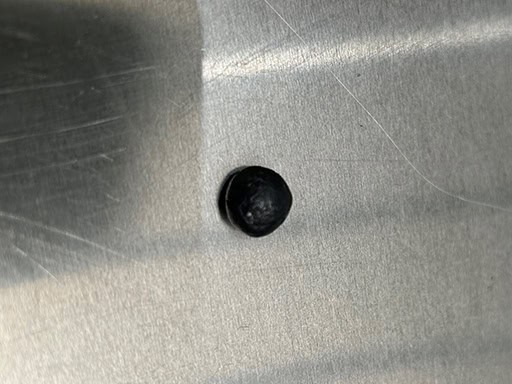
Transforming Carbon Capture: Compact Systems Leading the Way
The fight against global emissions requires innovative, scalable solutions that move beyond the limitations of traditional approaches. As industries and policymakers strive to achieve ambitious climate targets, it has become evident that centralized Direct Air Carbon Capture (DACC) systems, while innovative, are not sufficient on their own. At Carbon Capture & Commercialization (CC&C), we are forging a new path forward with compact carbon capture systems, a groundbreaking technology that is cost-effective, versatile, and impactful.
The Problem with Centralized Systems
Centralized DACC systems like Mammoth and Orca have garnered attention for their ability to capture CO2 directly from the air, showcasing innovative engineering such as the use of advanced adsorption materials and large-scale deployment capabilities. Designed to process thousands of metric tons of CO2 annually, they offer a glimpse into the potential for atmospheric carbon capture at scale, addressing the challenge of direct air capture with groundbreaking technology.
However, these large-scale facilities have significant drawbacks. Their prohibitive costs, often exceeding $350 per metric ton, make them financially unfeasible for widespread adoption. Furthermore, their reliance on large land areas and specific geological conditions limits their deployment to a handful of locations worldwide. The lengthy time required to build and operationalize these systems further delays their ability to address urgent emissions challenges.
The limitations of these centralized models are particularly glaring in industrial zones and urban areas, where CO2 emissions are concentrated and opportunities for reuse are abundant. For the carbon capture industry to make a meaningful impact, it must go beyond these centralized systems.
Compact Carbon Capture: Small Size, Big Impact
CC&C’s compact carbon capture systems offer a much-needed alternative. Designed to operate directly at emission sources, these systems represent a transformative shift in carbon capture technology. They provide cost-effective solutions by capturing CO2 for under $100 per metric ton, making them accessible to a broader range of industries. This affordability is achieved through advanced adsorption materials, modular design, and energy-efficient operations.
Compact systems can be deployed on-site at emission hotspots such as industrial facilities and urban centers. For example, in a possible Enhanced Oil Recovery (EOR) pilot project, compact systems could be deployed directly at the site of oil extraction to capture CO2 emissions as they occur. These systems would eliminate the need for expensive transport infrastructure, capturing CO2 at its source and reinjecting it into the reservoir to boost oil recovery. Such a setup could potentially reduce emissions by millions of metric tons annually while increasing oil recovery efficiency by up to 60%.
Additionally, the captured CO2 could be recycled for continuous use in the process, creating a closed-loop system that significantly lowers environmental impact and operational costs. This capability eliminates the need for costly transportation infrastructure, allowing industries to capture CO2 where it is produced.
The modular design of CC&C’s systems enables them to scale based on specific needs, whether through single-unit setups or networks of compact systems working in tandem. This adaptability makes them ideal for applications in Enhanced Oil Recovery (EOR), cement production, and steel manufacturing. By capturing CO2 at its source and facilitating its reuse, these systems help industries create closed-loop processes that reduce waste, lower emissions, and transform CO2 into a valuable resource.
Moreover, these compact systems could be powered by renewable energy sources, such as solar or wind, ensuring that their environmental footprint remains minimal. For instance, solar panels can be integrated directly onto the units, supplying the electricity needed to operate the adsorption processes. In another instance, wind energy could also be used to power clusters of compact systems deployed in rural areas, demonstrating how renewable energy integration can be tailored to specific locations and conditions. As a result, CC&C’s technology not only reduces costs but also aligns seamlessly with global sustainability goals.
Enhanced Oil Recovery: A Case in Point
Enhanced Oil Recovery (EOR) offers a compelling example of the transformative potential of compact carbon capture systems. By injecting captured CO2 into oil reservoirs, EOR not only boosts extraction efficiency but also reduces emissions. CC&C’s compact systems can be installed directly at industrial sites, capturing CO2 before it is released into the atmosphere. This approach eliminates the need for expensive pipelines or transportation networks, significantly lowering costs.
Once captured, the CO2 can be recycled within the extraction process, creating a sustainable loop that minimizes environmental impact. Imagine a hypothetical Enhanced Oil Recovery (EOR) project using compact systems deployed at an industrial oilfield. These systems could capture CO2 emissions directly on-site and reinject them into the reservoir to enhance oil recovery. Over the course of a year, this setup might reduce emissions by up to two million metric tons while boosting oil extraction efficiency by as much as 60%. Beyond these benefits, the closed-loop system would allow operators to recycle captured CO2, reducing operational costs and minimizing environmental impact. This integration of compact systems into existing industrial processes exemplifies their ability to deliver both economic and environmental benefits.
Compact systems also open up new possibilities for smaller, independent operators who may not have the resources to invest in large-scale infrastructure. By providing affordable and modular solutions, CC&C ensures that EOR remains a viable and sustainable option for a wider range of stakeholders.
Redefining Carbon Capture’s Role
CC&C envisions a future where carbon capture goes beyond emission reduction to transform CO2 into a valuable commodity. This vision includes integrating captured CO2 into sectors such as cement, steel, and agriculture to create products that are both sustainable and economically viable. By focusing on minimal energy requirements, CC&C’s systems significantly reduce costs and environmental footprints. For instance, while traditional DAC systems can consume upwards of 2,000 kWh per ton of CO2 captured, CC&C’s compact systems operate at less than 100 kWh per ton, showcasing a 95% reduction in energy usage. This efficiency not only lowers operational expenses but also minimizes the environmental impact of the capture process itself. The compact design ensures that these systems can adapt to various environments, from urban rooftops to large industrial complexes, making carbon capture technology accessible and impactful.
In addition to industrial applications, compact systems provide an innovative pathway to addressing urban emissions. By placing units on rooftops or within city infrastructure, municipalitely reduce CO2 levels in high-density areas, improving air quality and contributing to public health initiatives. These urban deployments demonstrate how compact carbon capture can become an integral part of modern cities’ sustainability strategies.
The Path Forward
The urgency of combating climate change demands transformative solutions, and CC&C’s compact carbon capture systems are designed to rise to this challenge. These systems offer immediate deployment with ready-to-install units, delivering fast results. At a cost of under $100 per metric ton, they make carbon capture more accessible to a wide range of industries. By redefining CO2 as a resource that drives both economic growth and sustainability, CC&C provides a pathway to reshaping the carbon capture landscape.
Looking ahead, CC&C is committed to continuous innovation. Plans are underway to further enhance the scalability of its systems, exploring opportunities to integrate with emerging technologies such as hydrogen production and green energy storage. By staying at the forefront of innovation, CC&C aims to set a new standard for the carbon capture industry by refining its technology and exploring novel deployment models.
Ready to Lead the Transition? Explore more about CC&C’s compact systems and CaptureX beads at www.ccandc.ai and follow us on LinkedIn
About CC&C: CC&C is at the forefront of carbon capture innovation, delivering cost-effective and scalable solutions powered by advanced adsorption technology. Our commitment to reducing CO2 emissions underpins our mission to create a sustainable, economically viable path to net-zero.
Safe Harbor Statement: This article contains forward-looking statements regarding CC&C’s technologies and their anticipated impacts. Actual results may differ materially due to various factors, including technological advancements, market conditions, and regulatory developments. CC&C assumes no obligation to update these statements as new information becomes available.
